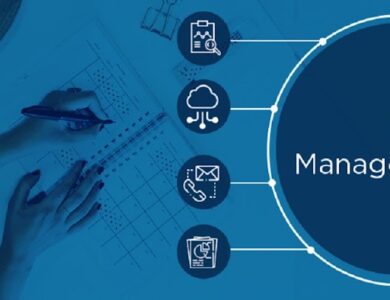The Ultimate Guide of Meaningful Ways to Reward Your IT Talent
Reward IT Teams: A Complete Guide

Introduction
Finding unique ways to reward IT teams can really boost morale and encourage everyone to do their best work. While bonuses and extra days off are great, there are other motivating ways to show appreciation that can make a huge difference. So let’s understand them!
A Guide to Rewarding IT Teams
What’s a truly meaningful way to reward IT teams, other than money or time off?
A Motivating way to reward IT teams is by investing in their professional development. This could be paying for them to get new certifications, sending them to tech conferences, or covering courses that help them learn the latest in technology. It shows you care about their growth and their future.
One of the most impactful ways to reward IT teams is by investing in their professional development. This can involve various approaches, such as:
- Certifications: Covering the costs for team members to obtain new certifications in their field.
- Tech Conferences: Sending them to industry conferences to learn about the latest trends and technologies.
- Online Courses: Paying for online courses that help them develop new skills or deepen their existing knowledge.
- Workshops and Seminars: Organizing or sponsoring attendance at workshops and seminars.
- Mentorship Programs: Creating mentorship opportunities within the company or with industry leaders.
What makes this type of reward truly meaningful?
These rewards ensure that you are seeing your team’s potential and are willing to invest in their future. It’s not just about thanking them for their work but it is more about helping them to get better, thus it makes them feel valued and part of the company’s long-term plans.
Professional development as a reward goes beyond simple acknowledgment; it shows that the company is invested in the growth and future of its employees. Here are several reasons why this type of reward is particularly meaningful:
- Long-term Investment: It demonstrates a long-term commitment to employees’ careers, making them feel valued and integral to the company’s success.
- Enhanced Skills: By acquiring new skills and knowledge, employees become more proficient in their roles, leading to improved job performance.
- Career Advancement: Opportunities for professional growth can pave the way for career advancement, increasing job satisfaction and retention.
- Motivation and Engagement: When employees see that their company is willing to invest in their future, it boosts motivation and engagement.
- Adaptability: Continuous learning helps IT professionals stay abreast of technological advancements, making the team more adaptable and innovative.
How should the reward be given?
The best way to reward is by announcing it during the team meeting or a specific event that celebrates achievements. It is important that the colleagues and managers are present during the appreciation event as this will make the team member feel valued and recognized.
Announce During Team Meetings
Announcing professional development rewards during team meetings or special events can significantly enhance their impact. Here’s how to do it effectively:
- Choose the Right Moment: Announce the reward during a team meeting or a celebration event where achievements are highlighted.
- Include Key Personnel: Ensure that colleagues, managers, and key decision-makers are present. Their presence underscores the importance of the recognition.
- Public Acknowledgment: Publicly acknowledge the individual’s contributions and explain why they are receiving this opportunity. This not only makes the recipient feel valued but also motivates others.
Personalize the Rewards
Tailoring professional development opportunities to individual preferences and career goals can maximize their effectiveness. Here are some steps to personalize rewards:
- Identify Interests: Regularly communicate with team members to understand their interests and career aspirations.
- Custom Training Plans: Develop personalized training plans that align with both individual goals and company needs.
- Flexible Options: Offer a variety of development opportunities, such as online courses, certifications, or conference attendances, allowing employees to choose what suits them best.
When would be an appropriate time to offer this reward?
A good time to give this reward is after a big project wraps up successfully or during an annual review when you talk about their performance. These moments naturally fit celebrations and reflections on achievements.
Choosing the right time to offer professional development rewards is crucial. Here are some appropriate moments to consider:
- Post-Project Completion: Rewarding the team after the successful completion of a significant project.
- Annual Reviews: During performance reviews, where achievements and future goals are discussed.
- Milestone Achievements: When an employee reaches a significant milestone, such as a work anniversary or a major accomplishment.
- Company Celebrations: During company-wide events that celebrate collective success.
Is there anything else you would like to add?
Keep the lines of communication open with your team by identifying what they are interested in learning and how they want to grow. Regularly checking in ensures that the rewards you offer are both appreciated and useful. Also, acknowledging both big and small wins regularly can help keep everyone motivated day-to-day.
Continuous Feedback and Engagement
Regularly checking in with your team to understand their professional development needs and preferences ensures that the rewards offered are both appreciated and effective. Here are some strategies for maintaining continuous feedback and engagement:
- Regular One-on-One Meetings: Schedule regular meetings to discuss career goals, challenges, and development needs.
- Surveys and Feedback Forms: Use surveys and feedback forms to gather input on desired training and development opportunities.
- Open Communication Channels: Encourage an open-door policy where employees feel comfortable discussing their professional aspirations through proper communication tools.
Recognition Programs
In addition to professional development, establishing a robust recognition program can further enhance morale and motivation. Here’s how to create an effective recognition program:
- Peer Recognition: Implement a system where team members can recognize each other’s efforts, fostering a supportive and collaborative environment.
- Manager Recognition: Ensure managers regularly acknowledge and appreciate their team’s hard work and achievements.
- Public Platforms: Use company meetings, newsletters, and intranet platforms to publicly recognize outstanding contributions.
Work-Life Balance Enhancements
Improving work-life balance is another meaningful way to reward IT teams. Consider the following enhancements:
- Flexible Working Hours: Offer flexible working hours to help employees manage their personal and professional lives better.
- Remote Work Options: Provide opportunities for remote work or build remote teams, which can be particularly valued in the IT industry.
- Health and Wellness Programs: Invest in health and wellness programs, such as gym memberships, mental health support, and wellness workshops.
Team-Building Activities
Team-building activities can strengthen relationships and improve team dynamics. Here are some ideas:
- Offsite Retreats: Organize offsite retreats to allow team members to relax, bond, and recharge.
- Team Outings: Plan regular team outings, such as dinners, sporting events, or recreational activities.
- Volunteer Opportunities: Engage the team in volunteer activities, fostering a sense of community and shared purpose.
Measuring the Impact of Rewards
To ensure that your reward strategies are effective, it’s important to measure their impact. Here are some metrics and methods to consider:
- Employee Satisfaction Surveys: Regularly conduct surveys to gauge employee satisfaction and gather feedback on the reward programs.
- Performance Metrics: Track key performance indicators (KPIs) to see if there is an improvement in productivity, quality of work, and project completion times.
- Retention Rates: Monitor employee retention rates to see if there is a decrease in turnover following the implementation of reward programs.
- Engagement Levels: Measure employee engagement through participation in development programs, feedback sessions, and overall enthusiasm.
Now, let us understand what are the future trends in Rewarding IT teams
Future Trends in Rewarding IT Teams
As the workplace continues to evolve, new trends in rewarding IT teams are emerging. Here are some future trends to watch:
- Personalized Rewards: Tailoring rewards to individual preferences and career goals will become increasingly important.
- Gamification: Incorporating gamification elements, such as points systems and leaderboards, to make professional development more engaging and fun.
- AI-Driven Insights: Using artificial intelligence to analyze employee data and provide personalized reward recommendations.
- Virtual Reality (VR) Training: Leveraging VR technology for immersive training experiences, providing hands-on learning in a virtual environment.
- Holistic Wellness Programs: Expanding wellness programs to include mental health support, mindfulness training, and holistic wellness initiatives.
Wrapping Up!
Offering rewards and recognition that contribute to the professional growth and development of your IT team is one of the most effective ways to show appreciation. It benefits both the team members and the company, fostering a culture where continuous improvement is valued and supported. For companies utilizing IT staff augmentation or looking to hire remote developers, these strategies are particularly crucial in maintaining team cohesion and motivation.
By investing in professional development, recognizing achievements, enhancing work-life balance, and implementing team-building activities, companies can create a motivating and engaging work environment. These strategies not only enhance job satisfaction but also encourage a committed and forward-thinking team.
In the rapidly evolving world of IT, staying ahead requires more than just technical skills; it demands a motivated, engaged, and continuously learning workforce. Future trends such as personalized rewards, gamification, AI-driven insights, VR training, and holistic wellness programs will further enhance the effectiveness of these reward strategies.
By adopting these comprehensive reward strategies, companies can ensure their IT teams are equipped, appreciated, and ready to tackle the challenges of tomorrow. Meaningful rewards that focus on professional development, recognition, and well-being are essential for building a motivated and engaged IT team. This approach not only enhances job satisfaction but also drives innovation and success, ultimately benefiting both the employees and the organization as a whole.



